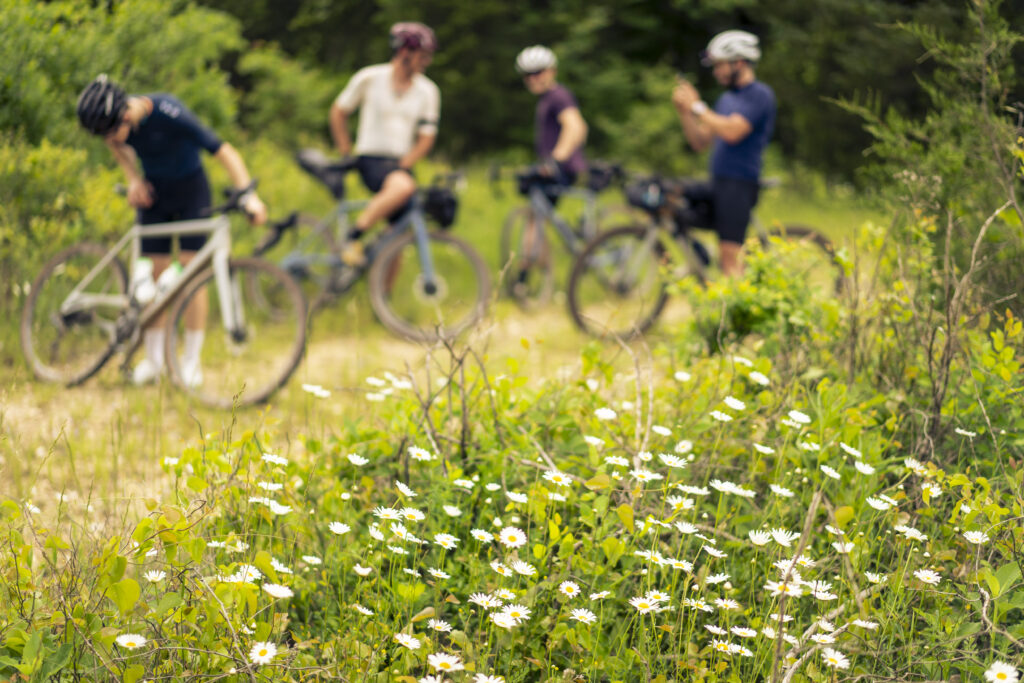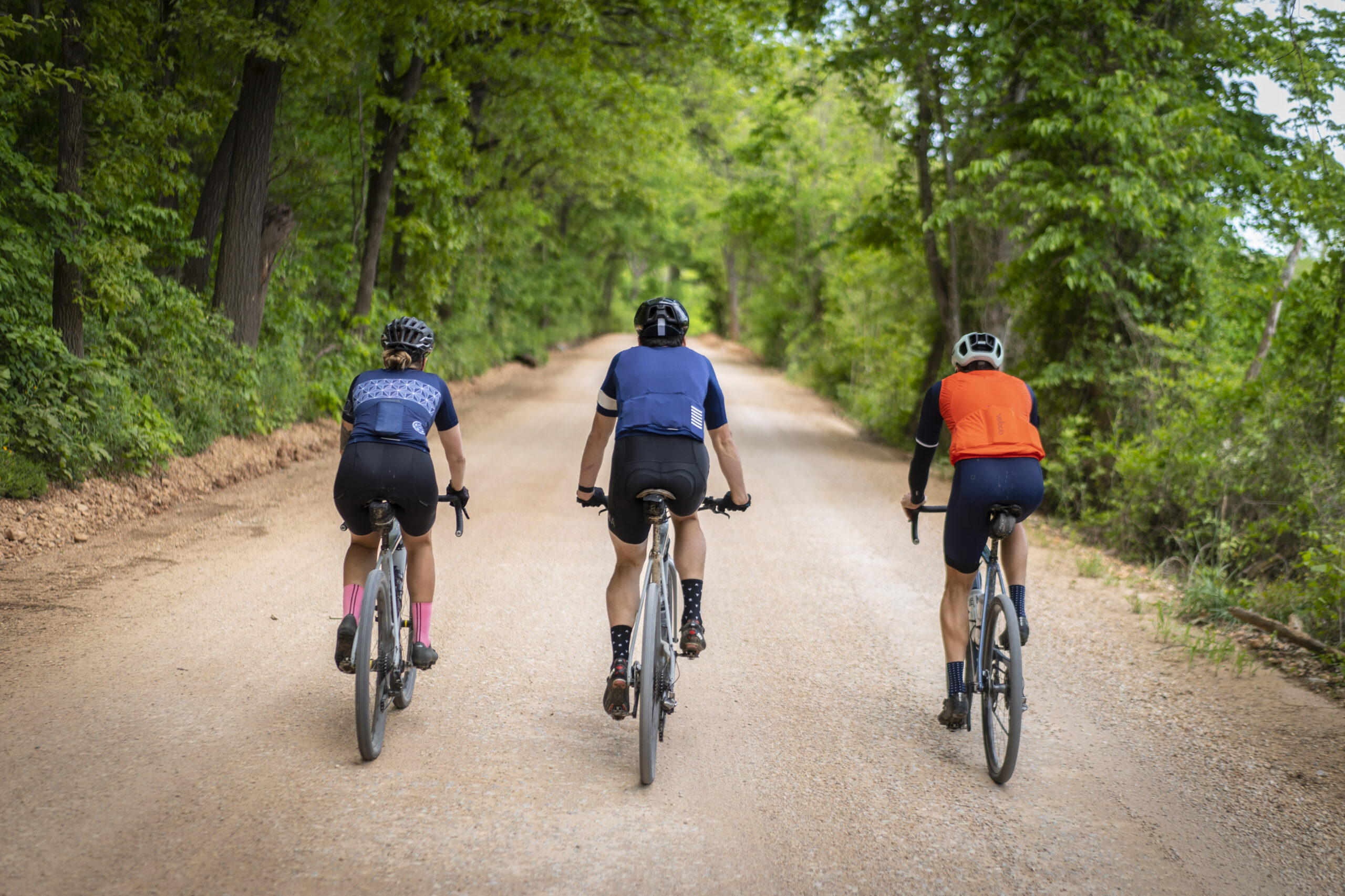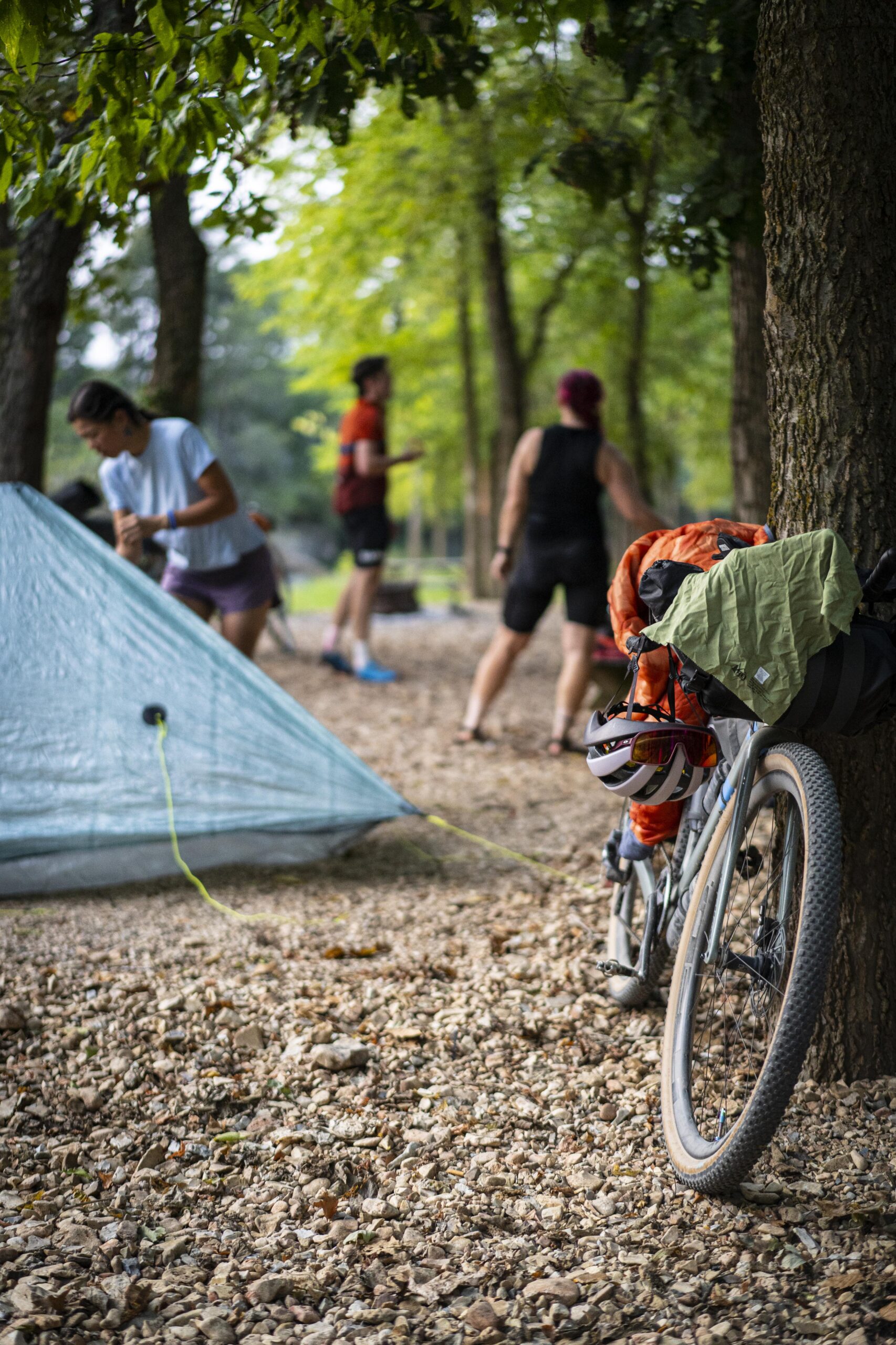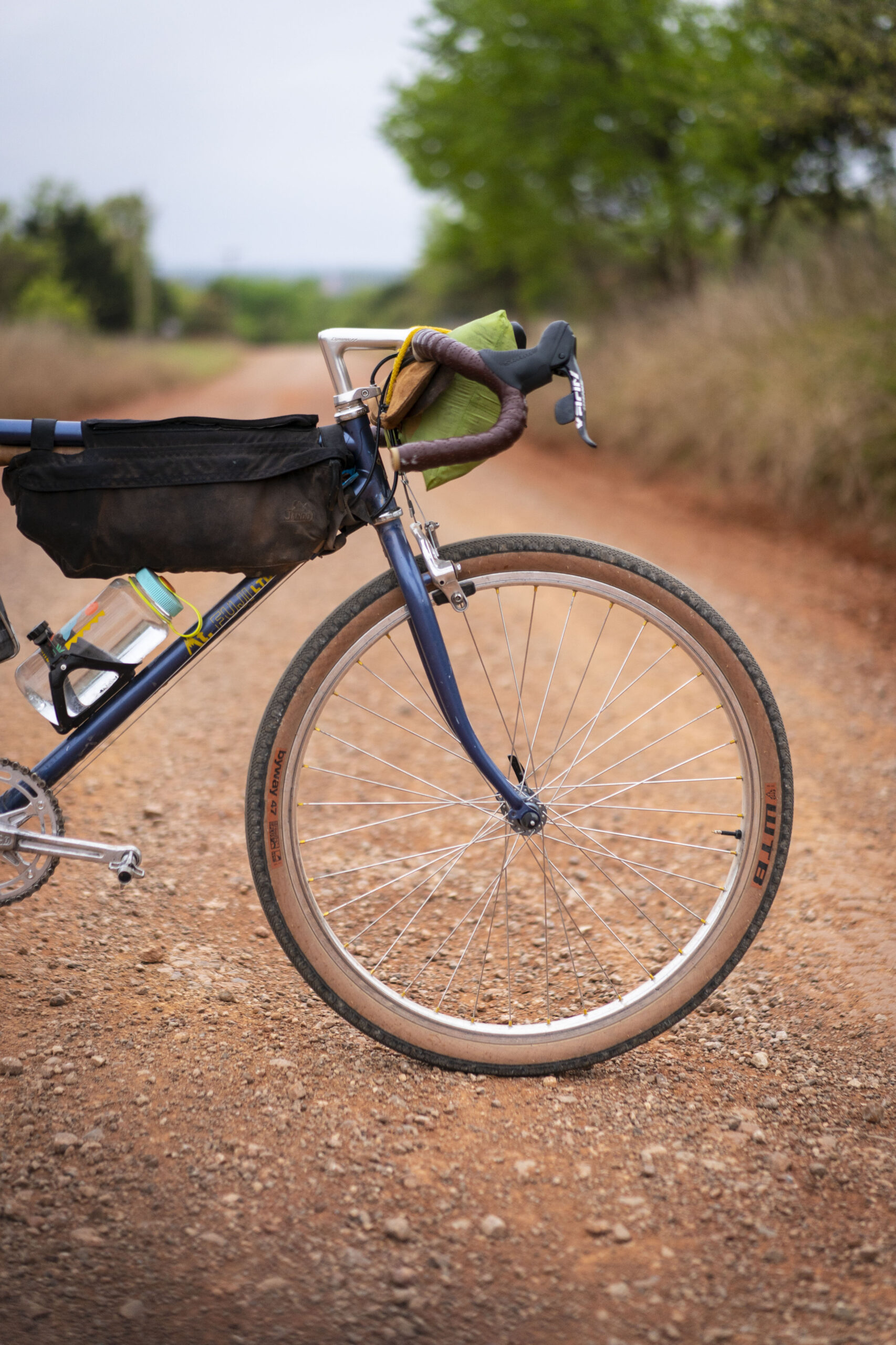It’s finally time. You’ve decided to try out gravel cycling. What a good day! Gravel cycling is a true adventure – whether you’re riding 10 miles or 100. It’s about exploration, slowing down to enjoy the views, stopping at the creek mid-ride for a dip in the cold water.
If you’ve gone for road or mountain bike rides before, you’ll have a general idea of what to expect – make sure everything on your bike works properly, bring water and snacks, have a flat kit. You know the drill.
If you’ve never been gravel riding, there are a few special things to take into consideration. Let’s go through them.

Bike set-up
First, be sure to set up your bike to be comfortable for a bumpy ride. Recommended tire size falls between 38-45mm. This article breaks down how to choose the best tire size.
As gravel cycling is between road cycling and mountain biking, your gravel tire PSI will reflect that. The ideal PSI range for gravel riding is 15-50 PSI (although 50 can even be a bit high depending on the circumstances). If riding tightly packed, smooth gravel, a higher PSI is appropriate. If riding looser, chunky gravel, consider lowering your tire pressure.

Supplies
The beauty of gravel routes is they’ll take you to rural parts of town with not much to distract you. It’s just you, open dirt roads, and probably some cows. However, this means you might need to be more prepared than you think. On your gravel ride, be sure to have:
- Plenty of water and food (get a little extra hydration help with products like Skratch, Gu, or Nuun). Depending on the distance of your ride, consider taking multiple water bottles or even a hydration pack like a Camelbak.
- A cycling GPS computer or smartphone with a map. You can find or create a route on Strava and transfer it to your computer like a Wahoo or Garmin.
- Flat kit and bike repair supplies (spare tube and/or a plug kit, CO2 cartridge and adapter, tire levers, extra sealant, multi-tool, chain tool)
- Layers: if you’re riding early in the morning and wear a wind vest or arm warmers, have a place to store them once you warm up. If you’re riding later in the evening, you might want to pack a wind vest or another extra light layer for a bit of warmth once the sun goes down.
- Lights: There’s no such thing as being too prepared. Having a set of front and rear lights come in handy if you end up being out later than expected – or for extra safety during the day to help drivers spot you down the road.

Road Rules
There’s a good chance that you’ll have to ride on the road for at least a short bit of your gravel route. It’s a good idea to brush up on the rules of riding on the road such as:
- Always ride on the right side of the road with the flow of vehicular traffic
- Vehicles are required to give at least 3 feet of space when passing a bicycle
- Use hand signals to communicate turns
- In Arkansas, cyclists may treat a stop sign as a yield and a stop light as a stop sign (if there’s no oncoming traffic while you’re at a red light, you may proceed through the intersection on a red light)
Lastly, bike rides are always better with friends. Try to gather a group to enjoy the ride together! If you ride by yourself, be sure to let a friend or family member know your route and when you expect to finish. We hope you have a great gravel ride. Remember to throw up a nice wave to other cyclists, drivers, residents, or tractors and farmers. 👋 Be sure to join the OZ Gravel Strava club to log your mileage and tag @OZGravelNWA in your gravel photos on Instagram!
